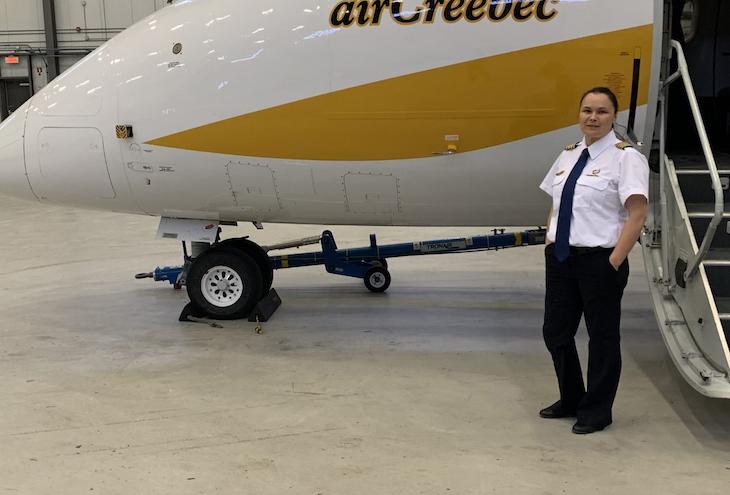When Rita Rabbitskin was a little girl, bush planes were the primary link between her Cree community in Northern Quebec and the outside world. She watched the skies with fascination, dreaming of one day flying herself. “That was the world I wanted to be part of,” Rabbitskin says. “I used to go see the pilots and crews that worked back home, learning what my options would be. The initial dream was to be a bush pilot.”
Her path has had its share of turbulence and unexpected turns, eventually leading her to Air Creebec 12 years ago. Although the current pandemic crisis has forced the Cree-owned airline to lay off half its staff, Rabbitskin continues to connect remote communities with essential services. “She is a real role model and a hero for a lot of young women,” asserts Cree School Board (CSB) Chair Sarah Pash. “We are very proud of her. I know a lot of young women see her as an example of the kinds of goals they can reach if they have dreams.”
Rabbitskin always liked the idea of becoming a pilot, but she credits a high school math teacher with giving her the push she needed to pursue the necessary qualifications. She moved to Montreal to complete physics and math courses that weren’t offered in her community, while hoping to somehow enroll in flight school.
“When I introduced that program to the CSB, hoping for sponsorship, they said that it would be very expensive,” recalls Rabbitskin. “Sometimes when you see students come down south the first time, after one semester they go home. They said prove yourself first. Go to college, show us your marks. I did that, so eventually they decided to sponsor me.”
While aspiring pilots might question whether math and science skills are necessary, Rabbitskin explains that she sometimes needs to make conversions to calculate her fuel range and apply geometric principles to plan her routes. Physics is essential for understanding the fundamentals of flying.
During her studies at Laurentide Aviation, Canada’s oldest commercial flight school, she was pregnant with her first child. After returning home to give birth to a healthy boy, she was back in ground school days later. Rabbitskin jokes that she just has to ask her son how old he is to remember how long she’s been flying.
Still restless after successfully becoming a bush pilot back home, Rabbitskin convinced the CSB to sponsor helicopter training in Quebec City. She was then expecting her second son. Although many colleagues from that time have long since abandoned aviation careers, Rabbitskin persevered despite the challenges.
“I think at the beginning people get too discouraged,” she explains. “You’re still struggling to prove this is what you want. I’d be spending more money on babysitters than making money. You have to be prepared for that as soon as you finish your program."
Being away for days as a helicopter pilot didn’t fit with raising two babies, so Rabbitskin joined Air Creebec. It was still a struggle to accumulate flight hours, but slowly she gained confidence and experience, which led to better schedules and compensation. Eventually, she achieved the stability she had been seeking. “I wouldn’t want to be anywhere else right now,” she says. “You find the balance if you believe in yourself. In the end, you know how much you struggle, how hard you work for it, so you’ll have more pride in what you worked for.”
Life as a pilot means regular emergency procedures and drills, simulation tests, and medical exams, not to mention flying in unpredictable northern weather. With so many ongoing challenges, Rabbitskin has little time to consider her pioneering role as a female Indigenous pilot, but when she can, she attends career fairs, encouraging young people that they can also achieve their dreams. “I grew up exactly like these kids back home,” she says. “It’s not easy, but it’s worth it in the end if it’s what you really want. If you work hard at it, the sky’s the limit.”













